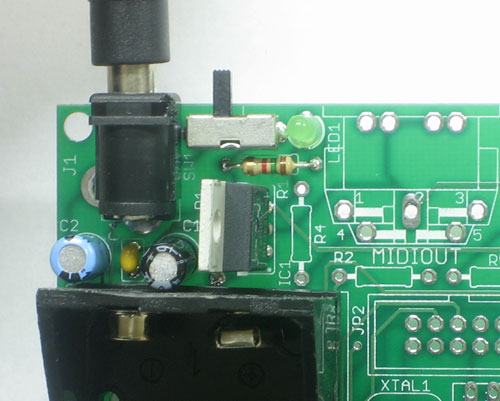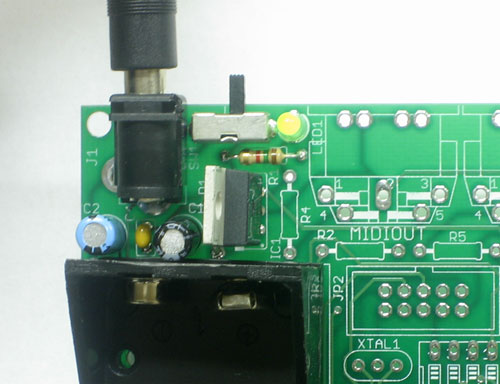The MIDIsense board requires a power supply to run the microcontroller and any extra electronics for the sensors and MIDI data path.
The power supply on each MIDIsense board is identical: one can use either a 'standard' 9V battery or a 7.5V to 12VDC, positive-tip wall wart supply. You can use this tutorial to help use a multimeter to identify a proper power supply. There is some protection circuitry, but its still a good idea to verify whether you have the right supply. Make sure its positive-tip, that it is a AC-DC not AC-AC adapter and that it does not provide more thatn 12V. It can be regulated or unregulated. There are high quality adapters in the shop that are good for use with MIDIsense, both 110V and multi-country
The power supply is designed so that if there is a 9V battery in the holder and you also plug it in, the device will automatically switch to wall-power
There is an on/off switch and an LED that lights up when the device is powered. The power supply converts the input voltage (7.5V to 12V) into 5V, which powers all of the electronics. Power supply draw/life is heavily dependant on what sensors are used. In general, a standard 300mA 9V battery should power the board (without sensors) for 15 hours.
If you're planning on using high-powered 'sensors' such as servos or IR distance sensors, you will probably need to use a wall adapter.
Here are images from the assembly manual. This board is unfinished, so ignore that there are some parts missing.
Plug in the adapter (or insert a 9V battery). With the switch to the left, the small LED next to the switch should be off.
With the switch to the right, the small LED should be lit. This indicates that the power supply is good.


